Now avail for Download as illustrated, hyperlinked PDF!
DOWNLOAD HERE (45MB, 268 pp):
http://airwarfare.com/sow/index.php/component/jdownloads/viewdownload/81/437?Itemid=241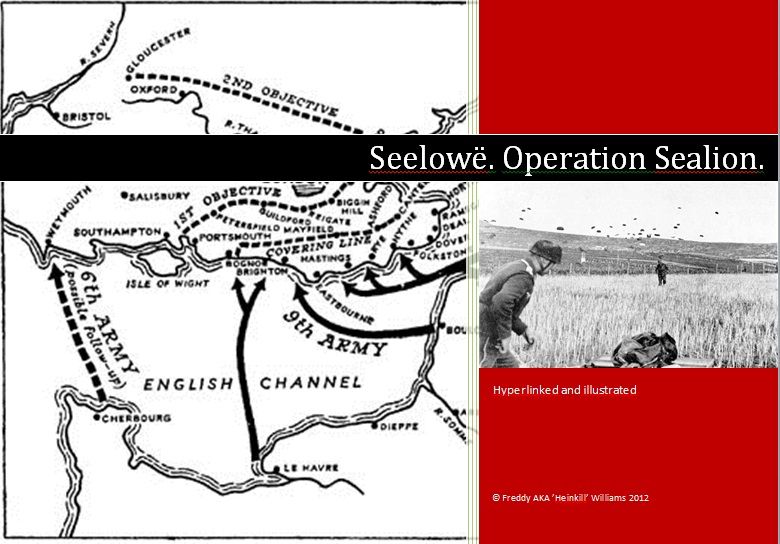
FEATURES
Background information on Sealion operational developments at the start of every chapter...

Lavishly illustrated
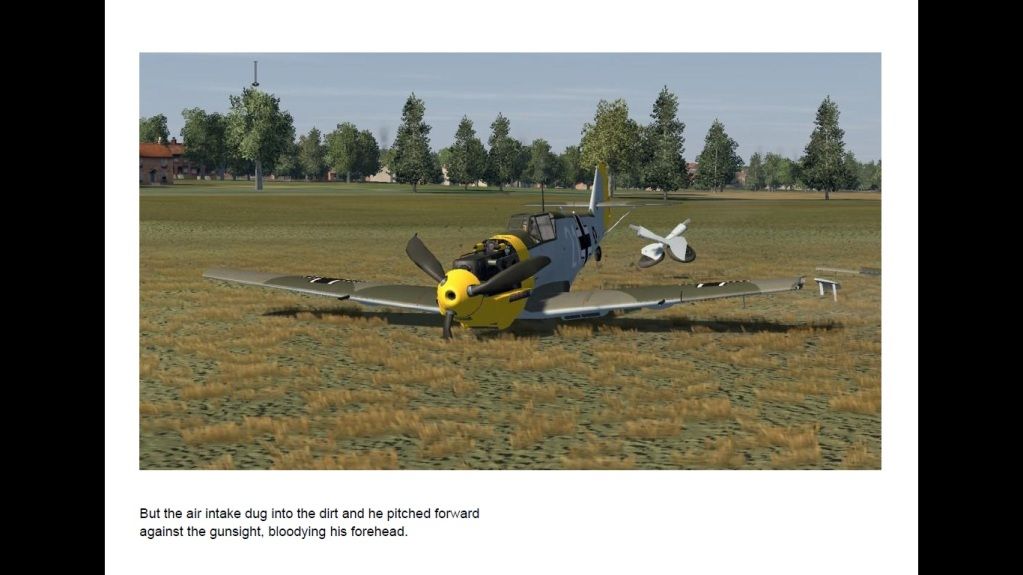

Tactical maps showing front lines and unit positions throughout the campaign, and links to Google map views of the battlefield area


Extensively hyperlinked, to
hundreds of sources of information on actual units, weapons, historical figures and events referred to in the storyline.

Supplementary chapters on important historical events of the time
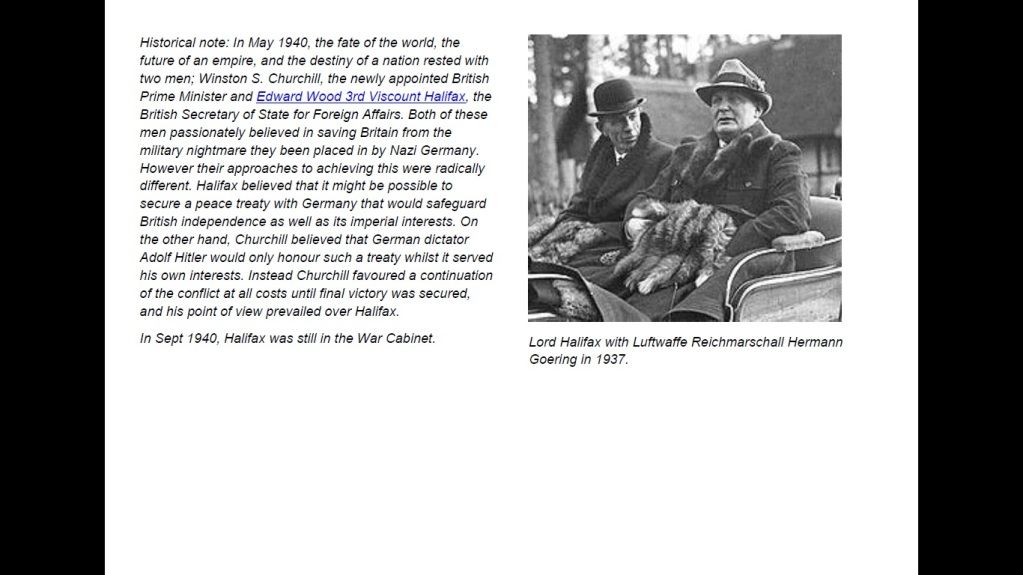
Background material detailing political and social developments accompanying the invasion
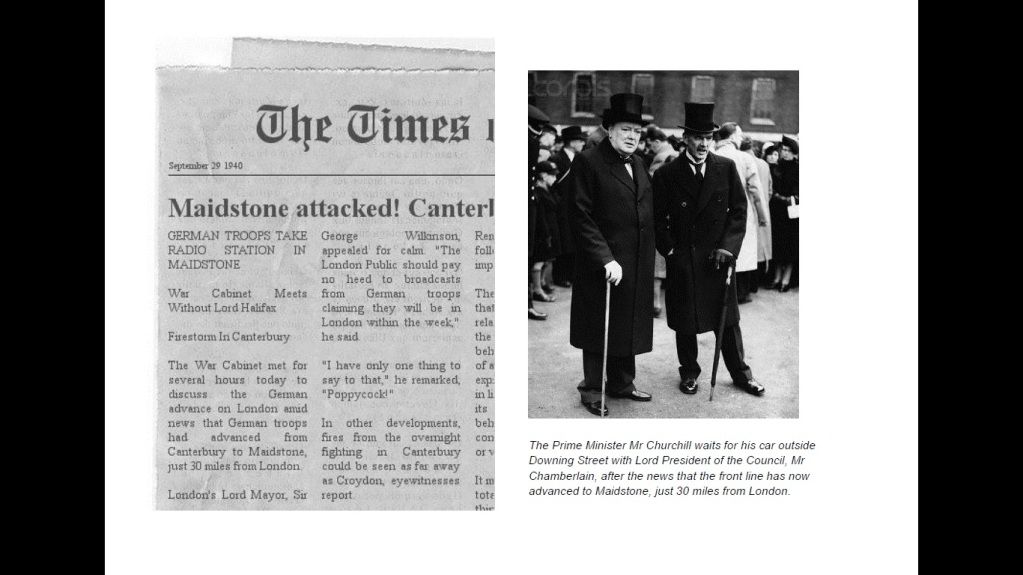
Speeches and dialogue based on real speeches given by historical figures and adapted to the Sealion storyline - example, Edward VIII's abdication speech, 'repurposed'.
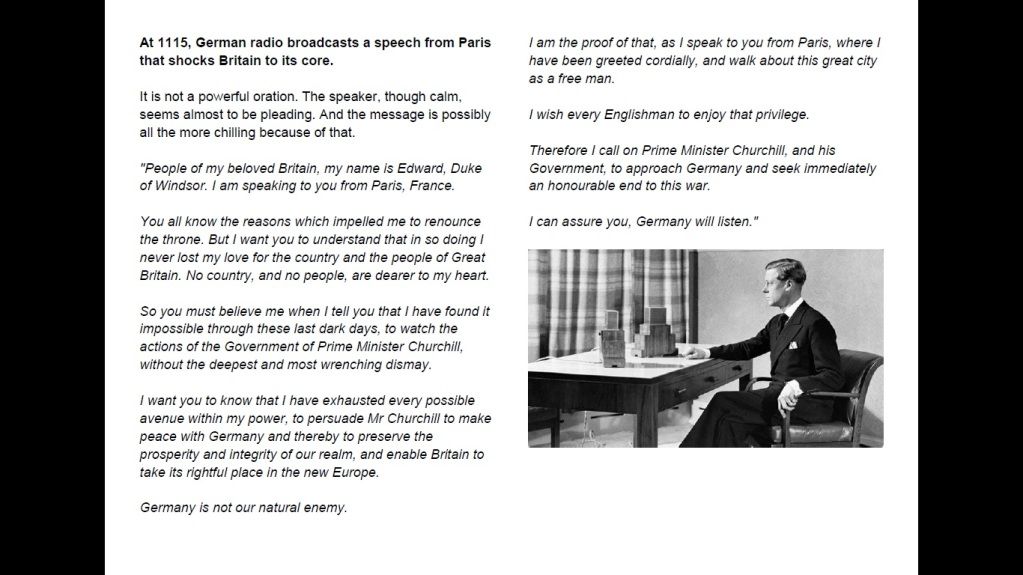
Links to Youtube video AAR content supplementing the text
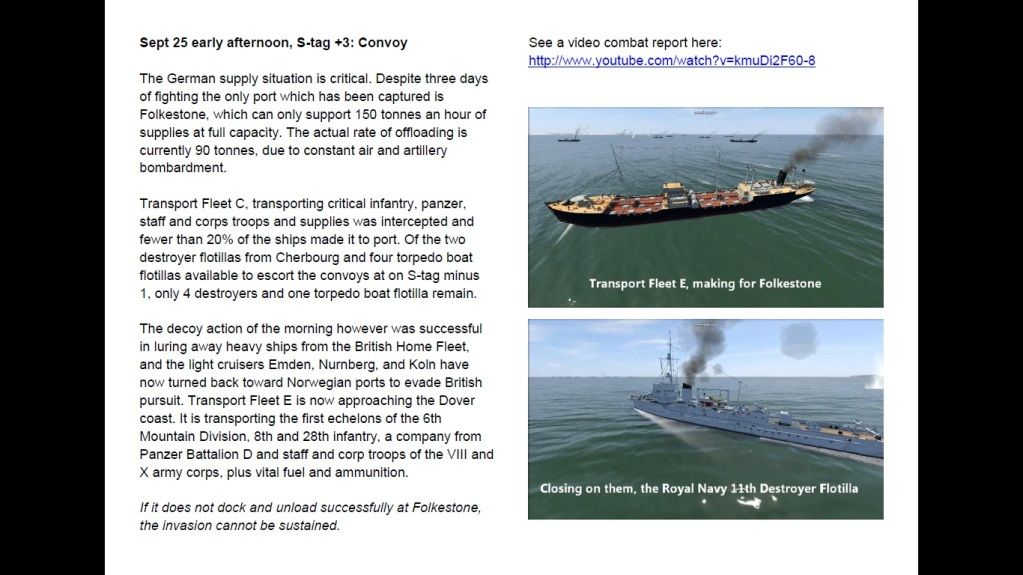
Enjoy!
Heiny
These AARs and screenies are taken from the Cliffs of Dover Sealion Mission Pack, Luftwaffe campaign, available for free download here:
http://bobgamehub.blogspot.com/p/cliffs-of-dover-missions.html
BACKGROUNDBy early November 1939, Adolf Hitler had decided on forcing a decision in the West by invading Belgium, the Netherlands and France. With the prospect of the Channel ports falling under Kriegsmarine (German Navy) control and attempting to anticipate the obvious next step that might entail, Grand Admiral (Gro�admiral) Erich Raeder (head of the Kriegsmarine) instructed his operations officer, Kapit�n Hans J�rgen Reinicke, to draw up a document examining "the possibility of troop landings in England should the future progress of the war make the problem arise." Reinicke spent five days on this study and set forth the following prerequisites:
Elimination or sealing off of Royal Navy forces from the landing and approach areas.
Elimination of the Royal Air Force (RAF).
Destruction of all Royal Navy units in the coastal zone.
Prevention of British submarine action against the landing fleet.
In December 1939, the German Army issued its own study paper (designated Nordwest) and solicited opinions and input from both the Kriegsmarine and Luftwaffe (German Air Force). The paper outlined an assault on England's eastern coast between The Wash and the River Thames by troops crossing the North Sea from Low Country ports. Reichsmarschall Hermann G�ring, head of the Luftwaffe, responded with a single-page letter in which he stated: "...a combined operation having the objective of landing in England must be rejected. It could only be the final act of an already victorious war against Britain as otherwise the preconditions for success of a combined operation would not be met." The Kriegsmarine response was rather more restrained but equally focused on pointing out the many difficulties to be surmounted if invading England was to be a viable option.
On 16 July 1940, following Germany's swift and successful occupation of France and the Low Countries and growing impatient with Britain's indifference towards his recent peace overtures, Hitler issued F�hrer Directive No. 16, setting in motion preparations for a landing in Britain. He prefaced the order by stating: "As England, in spite of her hopeless military situation, still shows no signs of willingness to come to terms, I have decided to prepare, and if necessary to carry out, a landing operation against her. The aim of this operation is to eliminate the English Motherland as a base from which the war against Germany can be continued, and, if necessary, to occupy the country completely."
Hitler's directive set four conditions for the invasion to occur:
The RAF was to be "beaten down in its morale and in fact, that it can no longer display any appreciable aggressive force in opposition to the German crossing".
The English Channel was to be swept of British mines at the crossing points, and the Strait of Dover must be blocked at both ends by German mines.
The coastal zone between occupied France and England must be dominated by heavy artillery.
The Royal Navy must be sufficiently engaged in the North Sea and the Mediterranean so that it could not intervene in the crossing. British home squadrons must be damaged or destroyed by air and torpedo attacks.
This ultimately placed responsibility for Sea Lion's success squarely on the shoulders of Raeder and G�ring, neither of whom had the slightest enthusiasm for the venture and, in fact, did little to hide their opposition to it. Nor did Directive 16 provide for a combined operational headquarters under which all three service branches (Army, Navy, Air Force) could work together under a single umbrella organisation to plan, coordinate and execute such a complex undertaking (similar to the Allies' creation of SHAEF for the later Normandy landings).

Upon hearing of Hitler's intentions, Italian dictator Benito Mussolini, through his Foreign Minister Count Ciano, quickly offered up to ten divisions and thirty squadrons of Italian aircraft for the proposed invasion. Hitler initially declined any such aid but eventually allowed a small contingent of Italian fighters and bombers, the Italian Air Corps (Corpo Aereo Italiano or CAI), to assist in the Luftwaffe's aerial campaign over Britain in October/November 1940.
COMBAT REPORTS21 September 1940: Operation Sealion, S-tag ('Sealion-Day') Minus One, afternoonThis morning the Luftwaffe began operations in response to Reichmarshall Goering's 16 September directive to resume attacks on RAF fighter bases and production facilities. Ju88s hit Brooklands Hawker factory but in general it was a quiet morning. Hit and run raids by small formations of enemy aircraft attacked both Kenley and Biggin Hill aerodromes but these were met by fighters from Kenley, Biggin Hill and Croydon. 238 Squadron had accounted for one destroyed while the Spitfires of 602 and 611 Squadrons accounted for one each destroyed. One Do17 damaged by 802 Squadron managed to get back to the French coast, but crashed at Landerneau killing all on board. However reconnaissance of the French coast indicates significant shipping movements at the ports of Le Havre, Calais and Dunkerque. Further reconnaissance was ordered and confirmed German shipping was marshalling off the French coast, including freighters, converted barges and car ferries.
21 September 1940: Operation Sealion, S-tag Minus One, eveningFurther recon indicated a large fleet was being assembled off Calais for a possible night crossing, in calm and clear conditions. British GHQ put all forces on full alert with codeword 'Cromwell' indicating 'invasion imminent'. Bristol Blenheims of 23 Squadron and Wellingtons of Bomber Command 2 Group, flying from Ford airbase hit the fleet at dusk, destroying several ships, but losing 8 out of 11 Blenheim and 4 out of 8 Wellington aircraft in the attack. Luftwaffe Bf109s of Lehrgeschwader 2 at Calais and Bf110s of ZG76 out of Abbeville claimed the downed bombers, while Spitfires of 64 Squadron were also engaged, claiming 3 Bf109s and 1 Bf110 destroyed without loss. During the night, Bomber Command and Coastal Command conducted further raids on the German fleet, without significant effect. Admiral Raeder's Kriegsmarine and Luftwaffe FW200s mined the Eastern approaches to the Channel, while intercepted radio traffic indicated a second invasion force was being prepared in Norway for a possible landing near the Thames estuary. German heavy guns concentrated fire on Dover, indicating a possible second landing zone.
22 September 1940: Operation Sealion, S-Tag, DawnThe first wave of a planned 330,000 men hit the English beaches at dawn. Rather than land at Dover or the Estuary (these were diversions) 4 divisions of Army Group A land between Folkestone and Rottingdean (near Brighton), XIII Army Corps under General Der Panzertruppe Von Vietinghoff gannant Scheel, 17th and 35th infantry division together with VII Army Corps under Generaloberst von Schobert, 1st Mountain Division and 7th Infantry Division. In addition 7th Paratroop Div land at Lympne to take the airfield.
Further West the 9th Army made shore between Bexhill and Eastbourne. 2 Divisions of the XXXVIII Army Corps under General von Mannstein, 26th and 34th Infantry Divisions, and from the VII Army Corp under General Heitz, the 6th Mountain Division, 8th and 28th Infantry Divisions.
Opposing them on the British GHQ stop line are the rebuilt forces of the VII Corps (1st Armoured Div, 1st Canadian and elements of 2nd Canadian Div, elements of New Zealand Army Corp Inf Div and the recently arrived Australian 9th infantry division diverted from Africa), Strategic Reserve centred on Surrey and North Hampshire, and the XII Corps (1st London Div, 45 Inf Div, 29 Inf Brigade, 1st Tank Brigade) based in Kent and West Sussex.
At first light, Blenheims make a run on a beach-head a Folkestone
Ju88s sweep across the battlefield to hit British reserves in the rear



German 7th Paratroop division attacks poorly prepared defences at Lympne as 111 Squadron scrambles to get their machines away




Gunners on German car ferries cover the beach as the armour unloads under fire from British defences




LG2 109s and 64 Sq Spitfires in a deadly dance

 22 September 1940, S-tag, afternoon: West of Folkestone (flyables, as above, plus Bf109E4bs and Bf110C7s of Erpro 210)
22 September 1940, S-tag, afternoon: West of Folkestone (flyables, as above, plus Bf109E4bs and Bf110C7s of Erpro 210)German troops of the 17th and 35th infantry divisions supported by the 8th Panzer division have established a beach-head west of Folkestone and are driving through the town of Hythe for the Port. Their objective is the bridge over the Canal. The land battle is taking place house by house, street by street, as British mobile reserves throughout Kent are mobilised. A second invasion fleet has been spotted leaving ports in Norway. Large numbers of German fighters and bombers are sweeping the coast, and attacking naval forces in the Channel.
64 Sq Spitfire scramble from Hawkinge in their third sortie of the day

British forces are caught on the bridge at Hythe as German troops, with motorcyle borne MGs in the vanguard, race to take the crossing

British light armour reinforcements, on the move to strengthen the GHQ stop line, while British anti-tank guns lie in wait in the grass outside Hythe


Anarchy on the beachhead west of Folkestone as Blenheims strike and freighters collide


Erpro 210 moves in to hit British land and sea forces around Hythe



German armour and troop carriers advance on the village, as the concealed British anti tank guns hit back



Erpro 210 strikes British positions along the canal


While in the air, the defenders and attackers tangle

